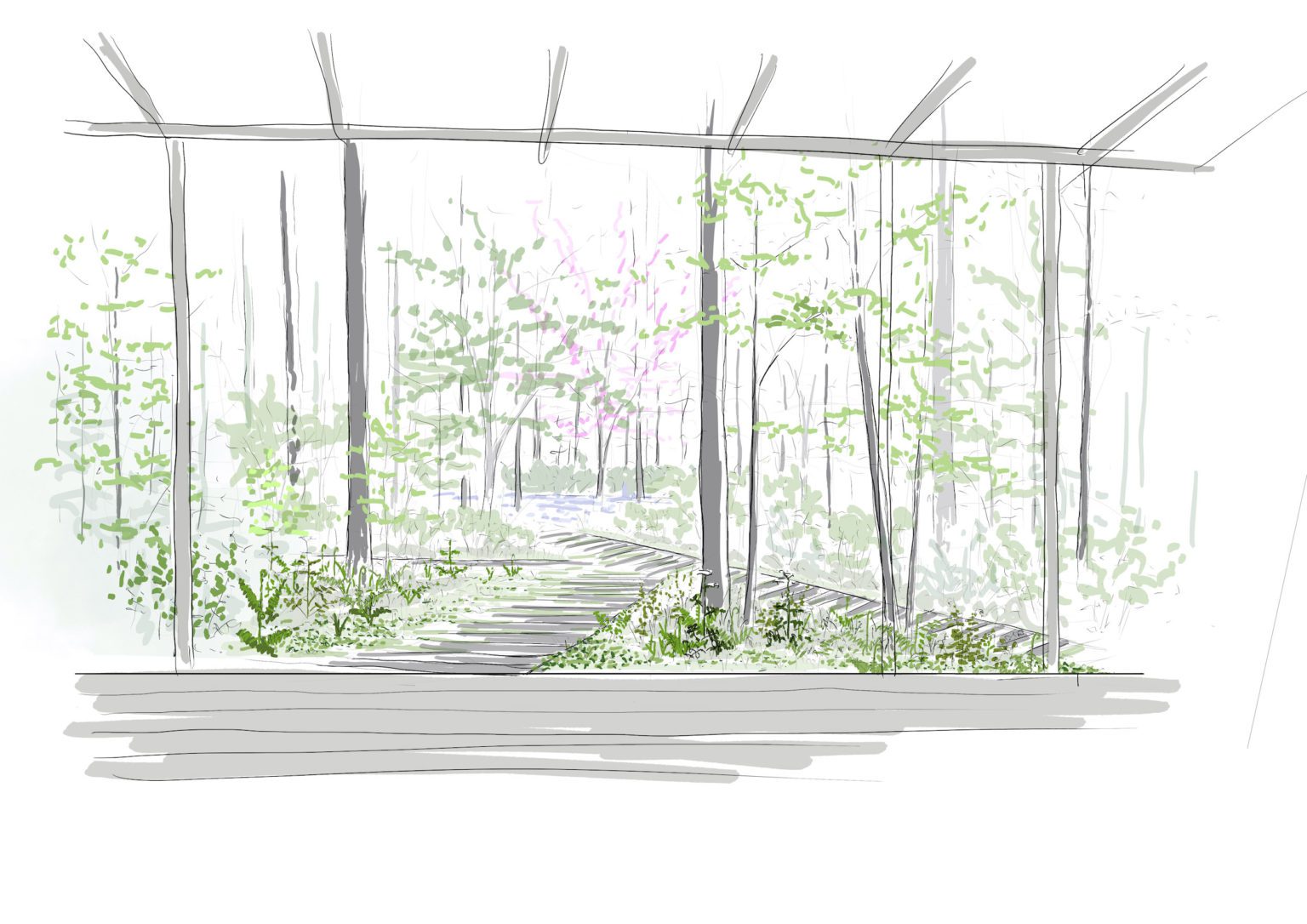
Due to several decades of mismanagement many dying oaks lost their tops when they were not dying. This project therefore combines silvicultural knowledge to regenerate afforestation with the sensitivity of the landscaper to arrange and spatialize a living space and even see an edible garden inspired by the principles of the garden forest and permaculture.
NOTICE
The afforestation as a whole seems weakened by stressful management which eliminates the entire intermediate stratum by favoring a cover of regularly mown grasses. Indeed, faced with this anxiety-provoking and poor context, many oak trees are showing signs of poor health. This phytosanitary state should draw our attention to the potential danger that these withering individuals can cause to the future dwelling as well as to the neighborhood. A phytosanitary study will be carried out by a specialized study office, allowing us to state with precision the trees to be felled or preserved.
However at first glance we can count 26 subjects to be slaughtered for health reasons.
To this is added 9 subjects to be cut down for the establishment of the house. That is a total of 35 subjects to slaughter. Please note that our plant strategy provides for the replacement of up to 25 trees, including 19 young oak trees and 8 young ornamental multi-stem trees such as prunus and cornus Florida. Added to this are several hundred young forest seedlings of hornbeams and lime trees to reproduce a coppice under high forest suitable for natural afforestation. The ecosystem created will be enriched with time, seeds and opportunistic selection work.
1/ A new coppice under high forest to regenerate afforestation: plant cells

Above all, our development project will consist of regenerating the forest and its soil. For this we propose to combine knowledge of the forestry world with that of landscaping.
Our intervention will aim locally, like an acupuncturist, to reconstitute the afforestation, with regeneration cells. These spaces will be destined to evolve freely with the minimum of intervention. They will be composed of local species taking advantage of gaps in the forest cover to grow.
In this dynamic, we will establish a new intermediate stratum composed of annuals then nitrogen-fixing woody plants, and for the succession of young hornbeams and young lime trees. This new setting will protect the new succession from oak afforestation. In fact, a few young sessile oak seedlings will be planted in
their breast. Tight, they will grow high and fast in search of light ensuring a good succession.
Particular attention will be paid to the soil, which will be amended by crushing the felled trees. The goal, no longer leave the organic matter of the plot, stopping its impoverishment.
From a landscape point of view, these cells, strategically placed, will frame the views, hide from view and offer a new division of space, evolving over time.
2/ The structure of the project: the pathways

In this garden forest, our intervention can be compared to an acupuncture session, where we intervene in the sandstone of luminous gaps.
The only layout, the only structure of the plan will be the layout of the circulations. They make moving easier, protect the forest floor from excessive compaction while telling a story.
We can divide them into two categories:
Motorable road
For the passable road, we suggest using the materiality of the forest roads in stabilized gravel. At the same time permeable to water, solid and with little impact on the root system, it will integrate gently into this micro forest landscape.
Path
The trails will be in the busiest areas covered with oak sleepers. In secondary areas, a version in stabilized sand will accompany the walk.
3/ Living: a poetic walk

The walk begins to the north as soon as the sliding gate is opened in the hedge free of shrubby loniceras and viburnums, on the street side. From there, follow one another different cells and clearings.
THE FLOWERED CLEARINGS
Taking advantage of the gaps left by ancient oaks, they are composed of a high stratum of flowering woody species such as prunus sargentii, magnolias or even Florida cornus. In the low stratum of wood hyacinth, sorcerer’s violet, dwarf brambles will cover the ground… these breaths offer from the end of winter until autumn shimmering colors both by their flowers and by their foliage.
THE EDIBLE CLEARING
Taking advantage of its direct proximity to the house and the largest gap in the plant cover, we install a whole mixture of three layers of perennials, climbers and small edible shrubs… ranging from currants to Kiwai, including blackberries, angelica and akebias.
THE POND CLEARING
Surprise from the bottom of the wood. When we thought the walk was over for a long time, we discovered this forest pond offering refuge to batrachians from the neighboring marshes and ponds. The latter will find here an alternative in their migration between the marshes and the ponds of the forest of Chantilly. A small wooden terrace can accommodate a table and four chairs to admire the house through the oak grove.